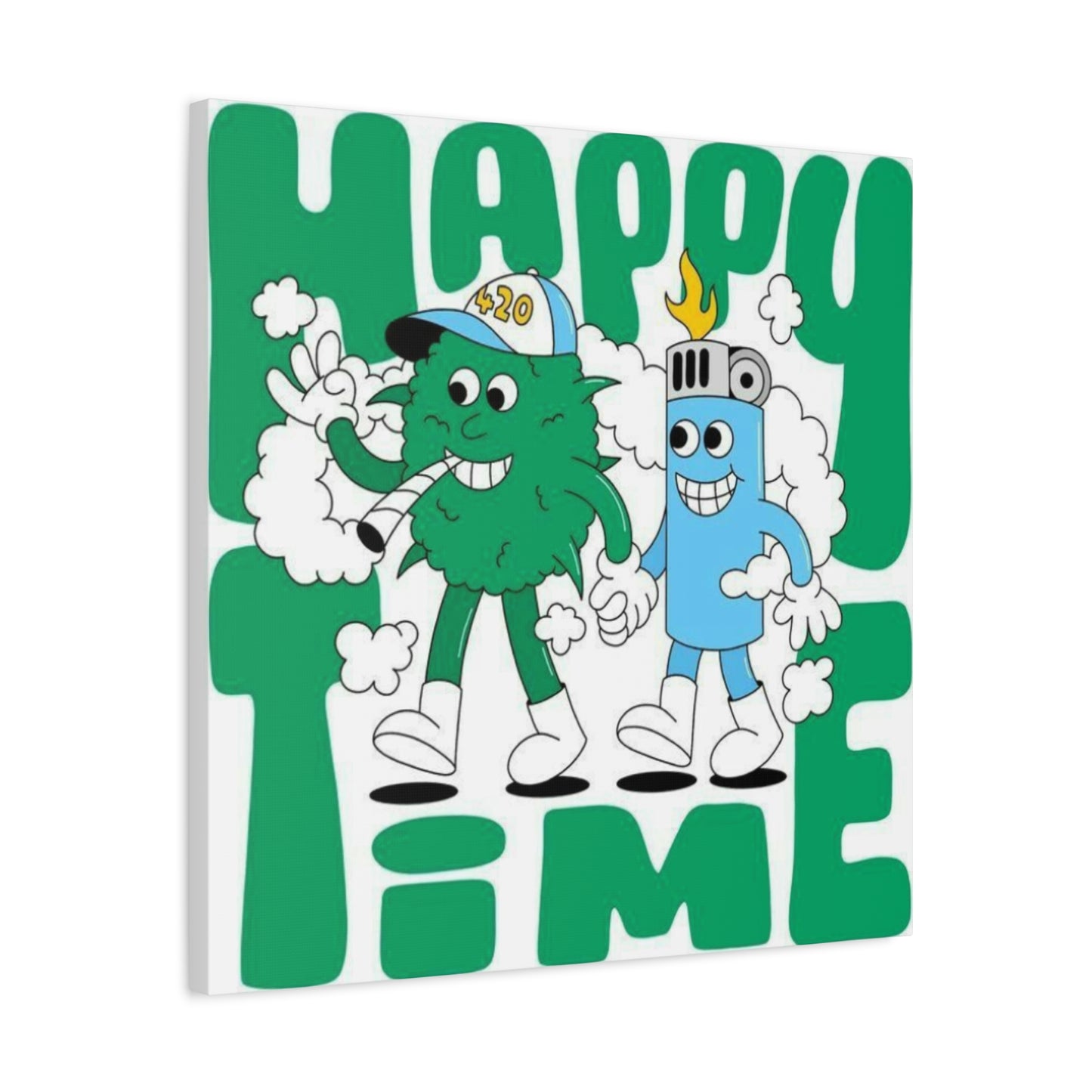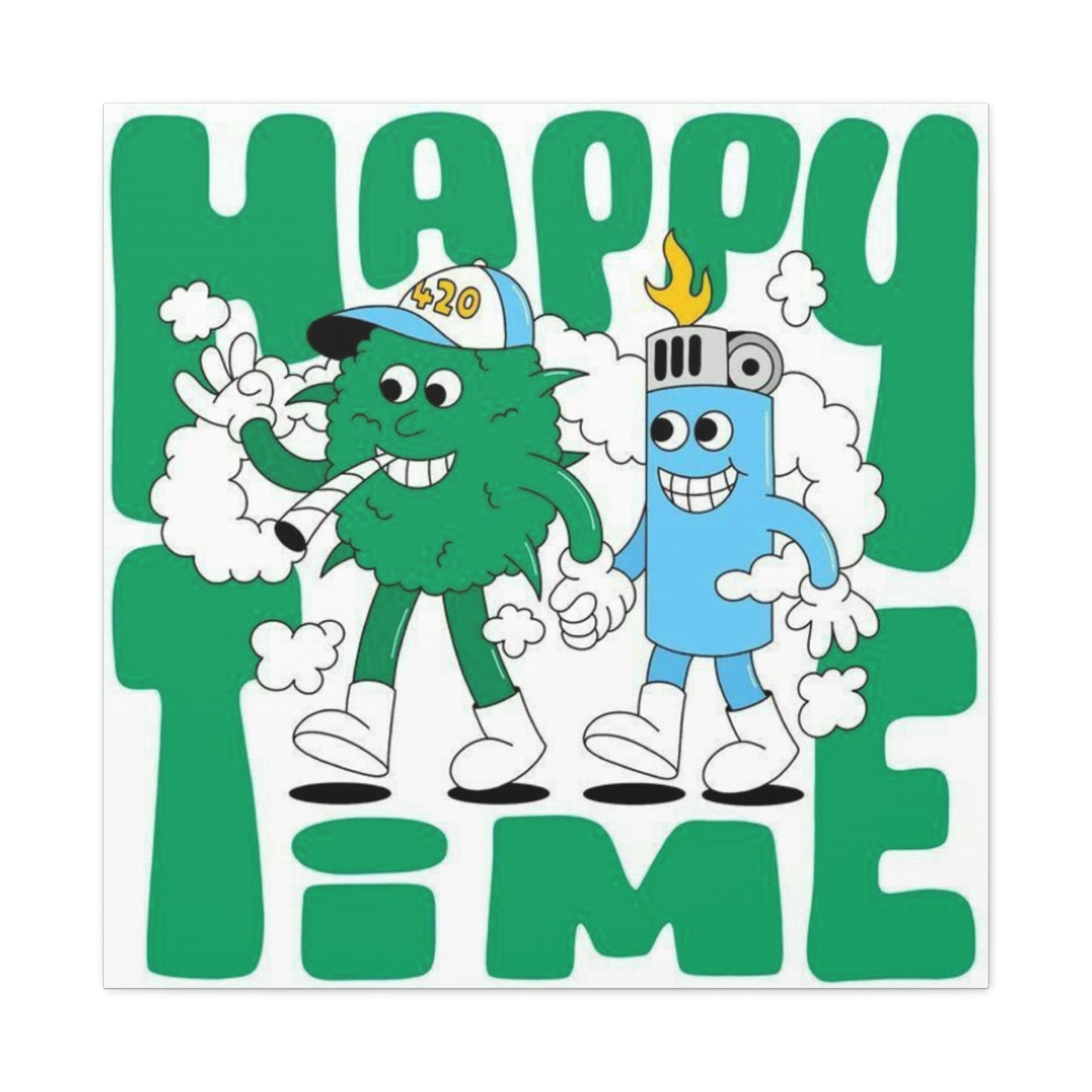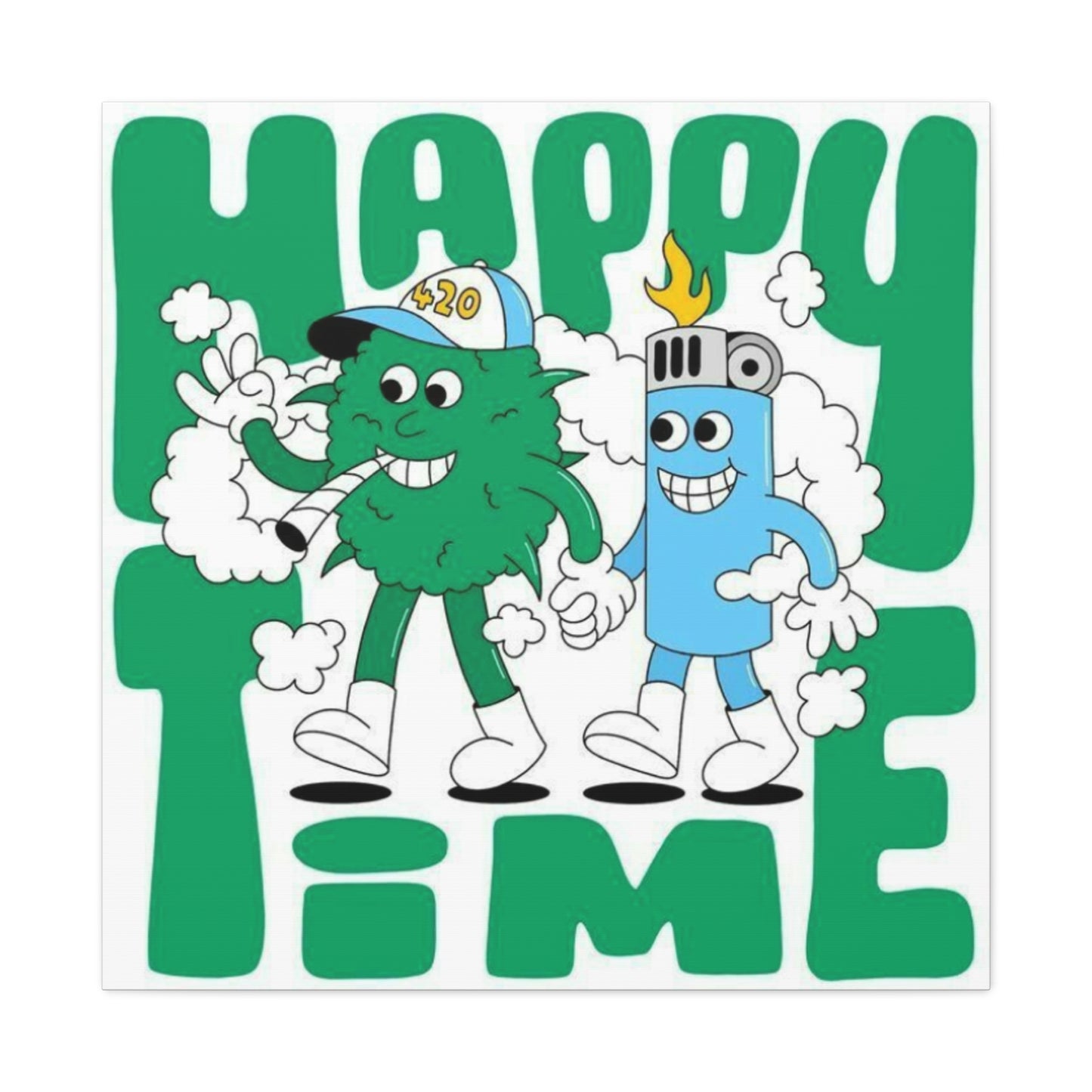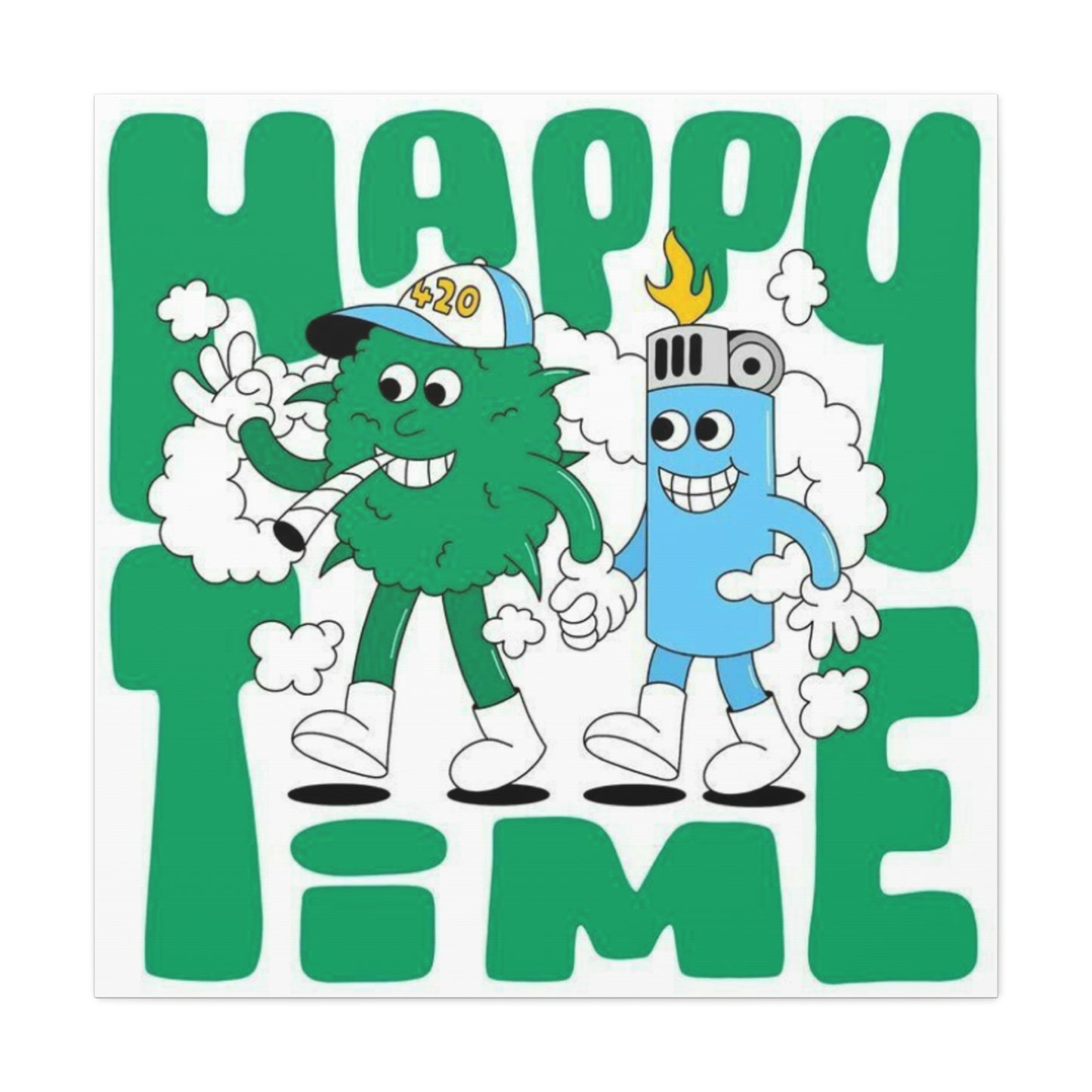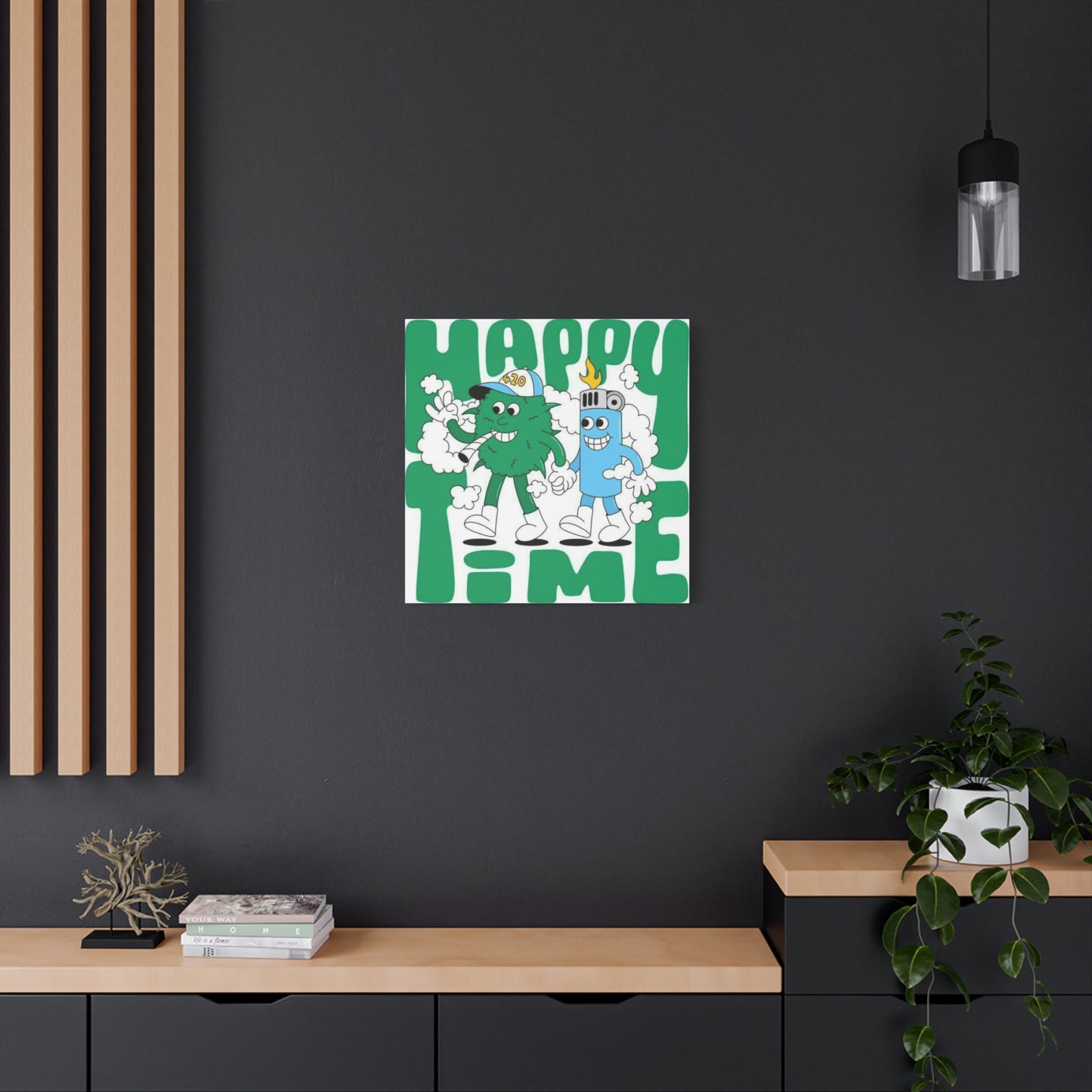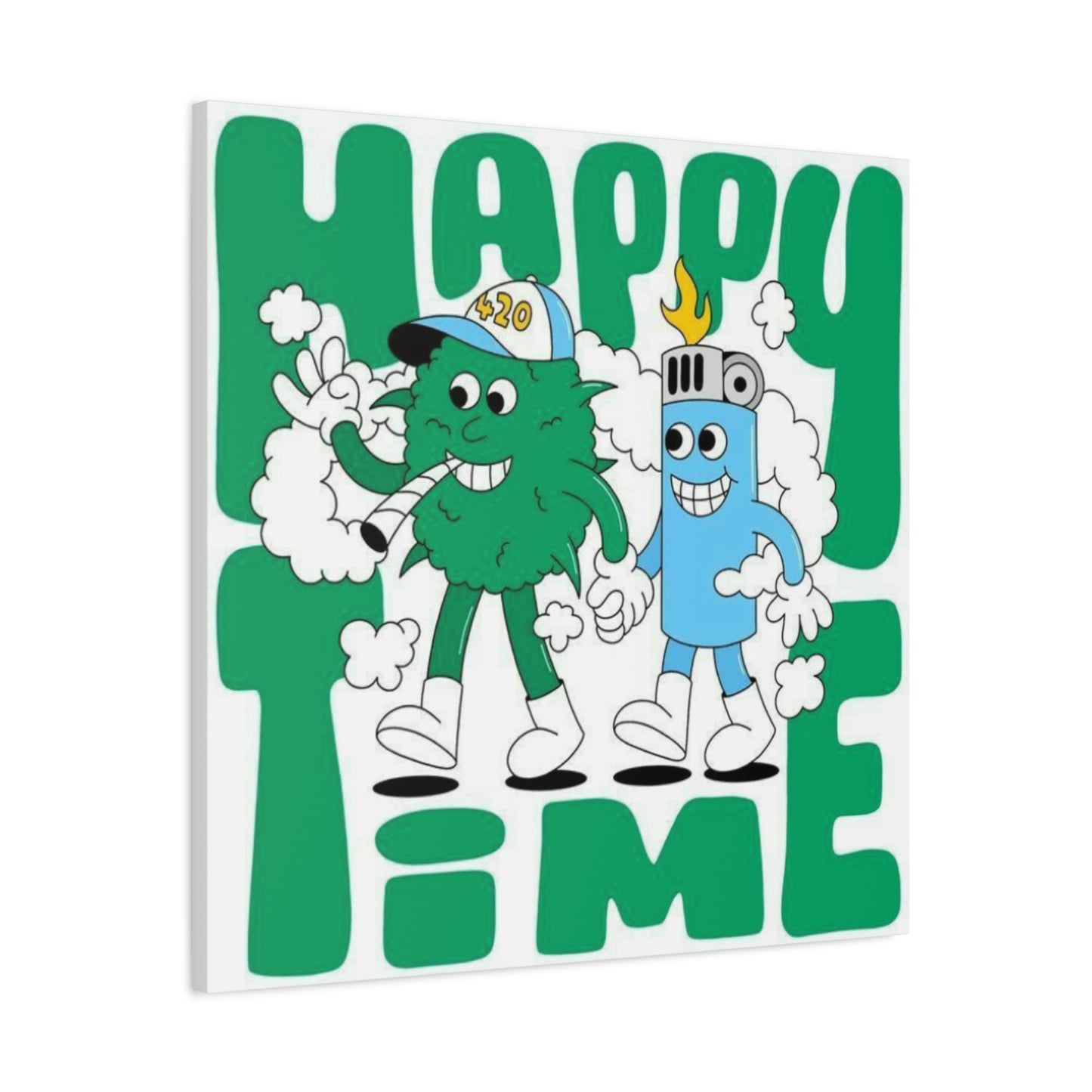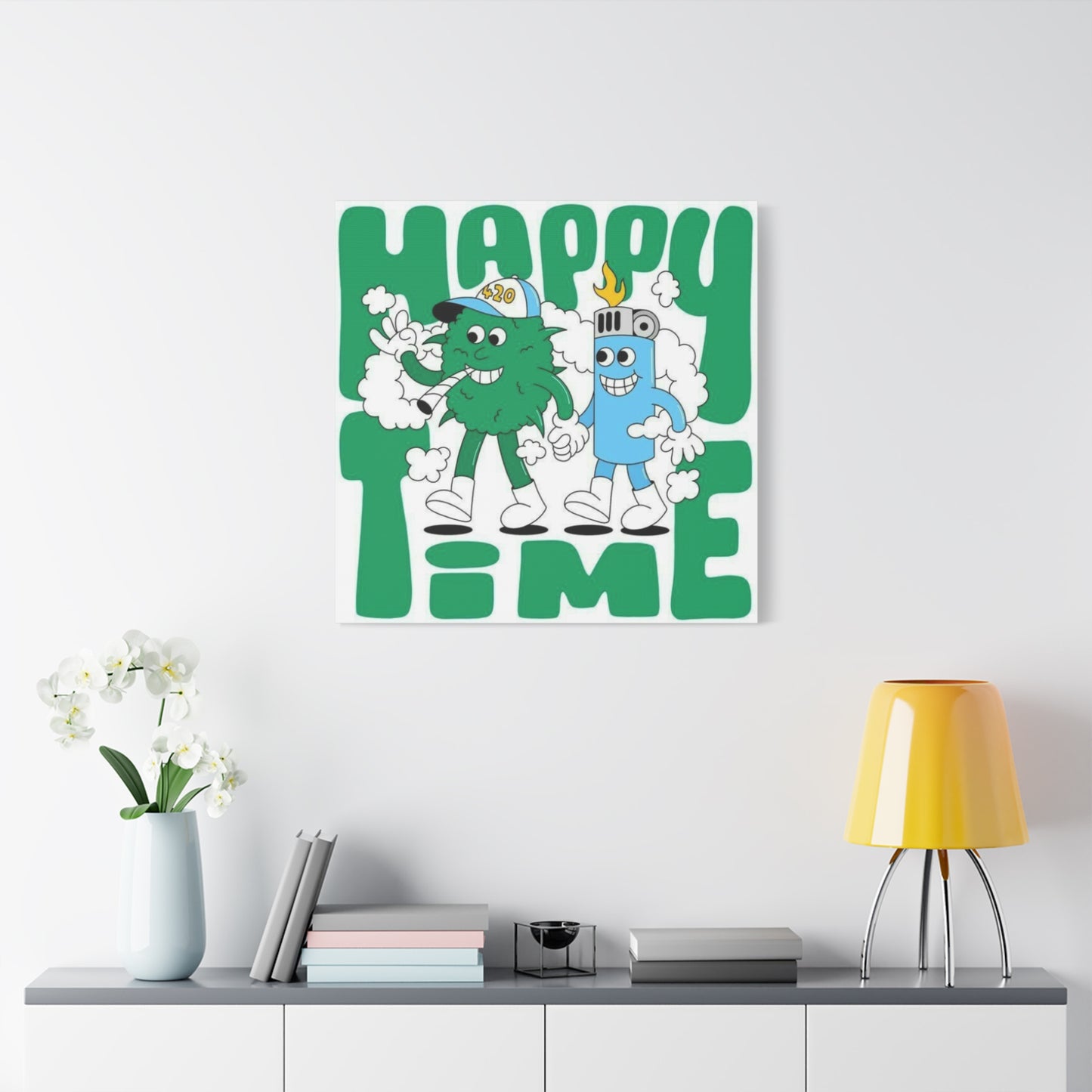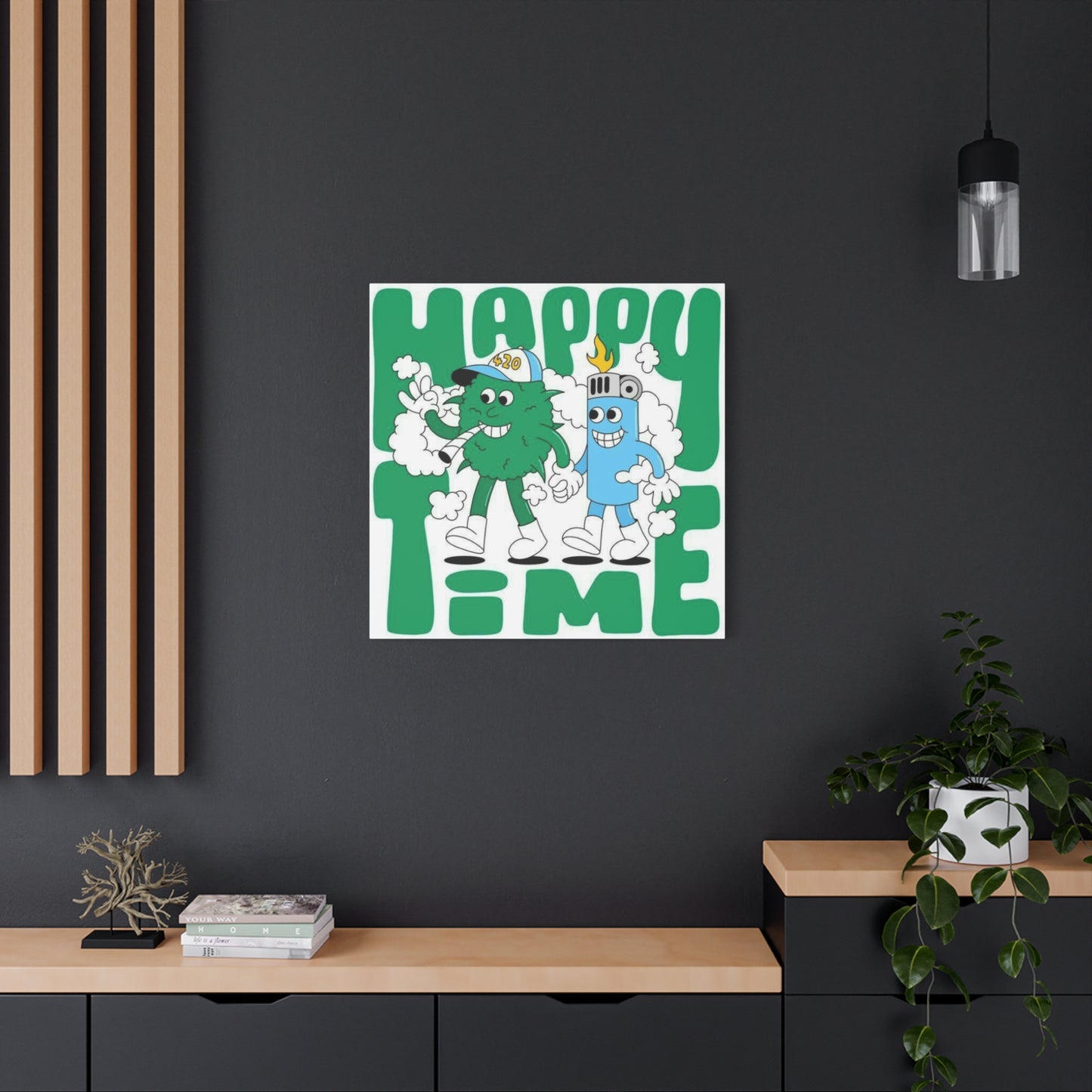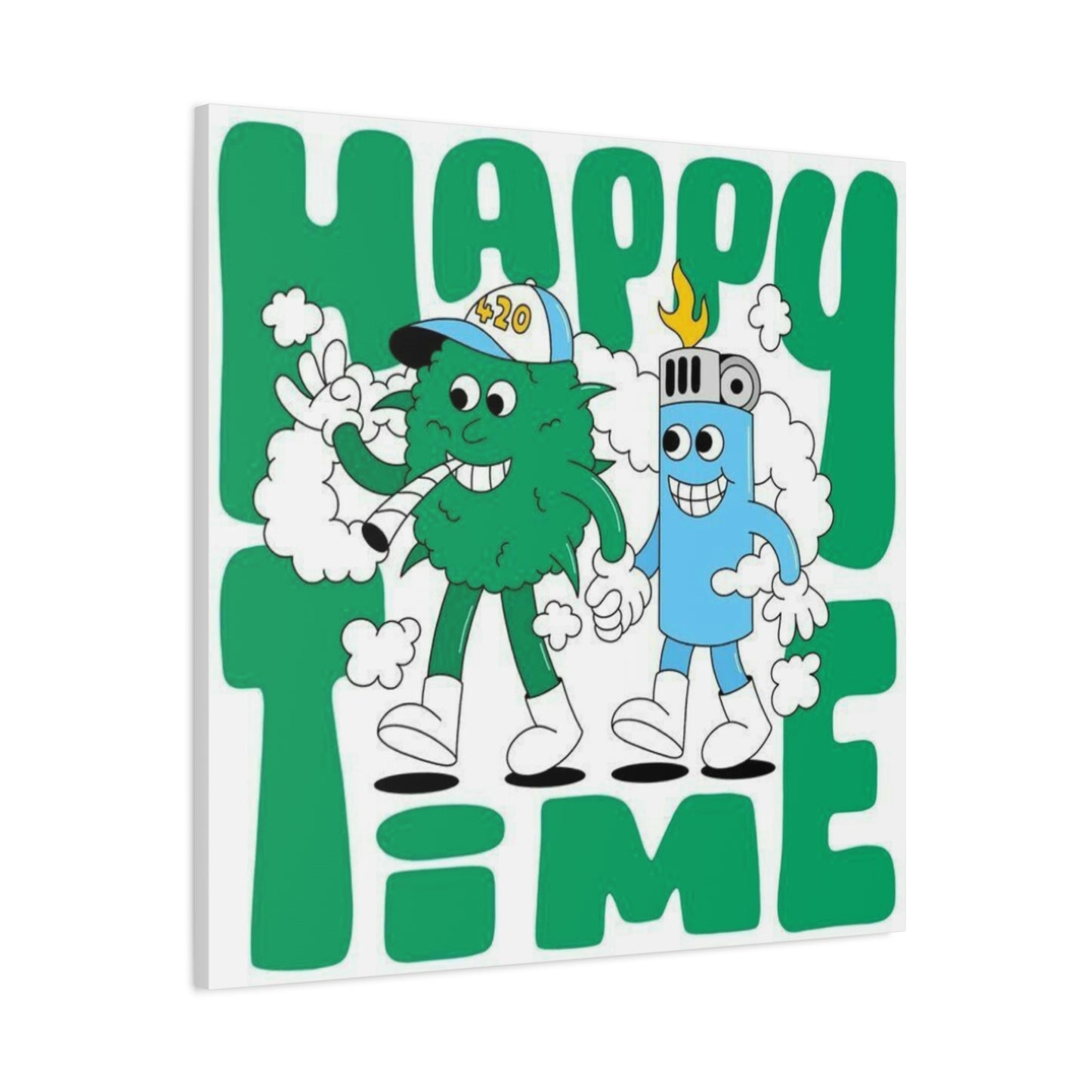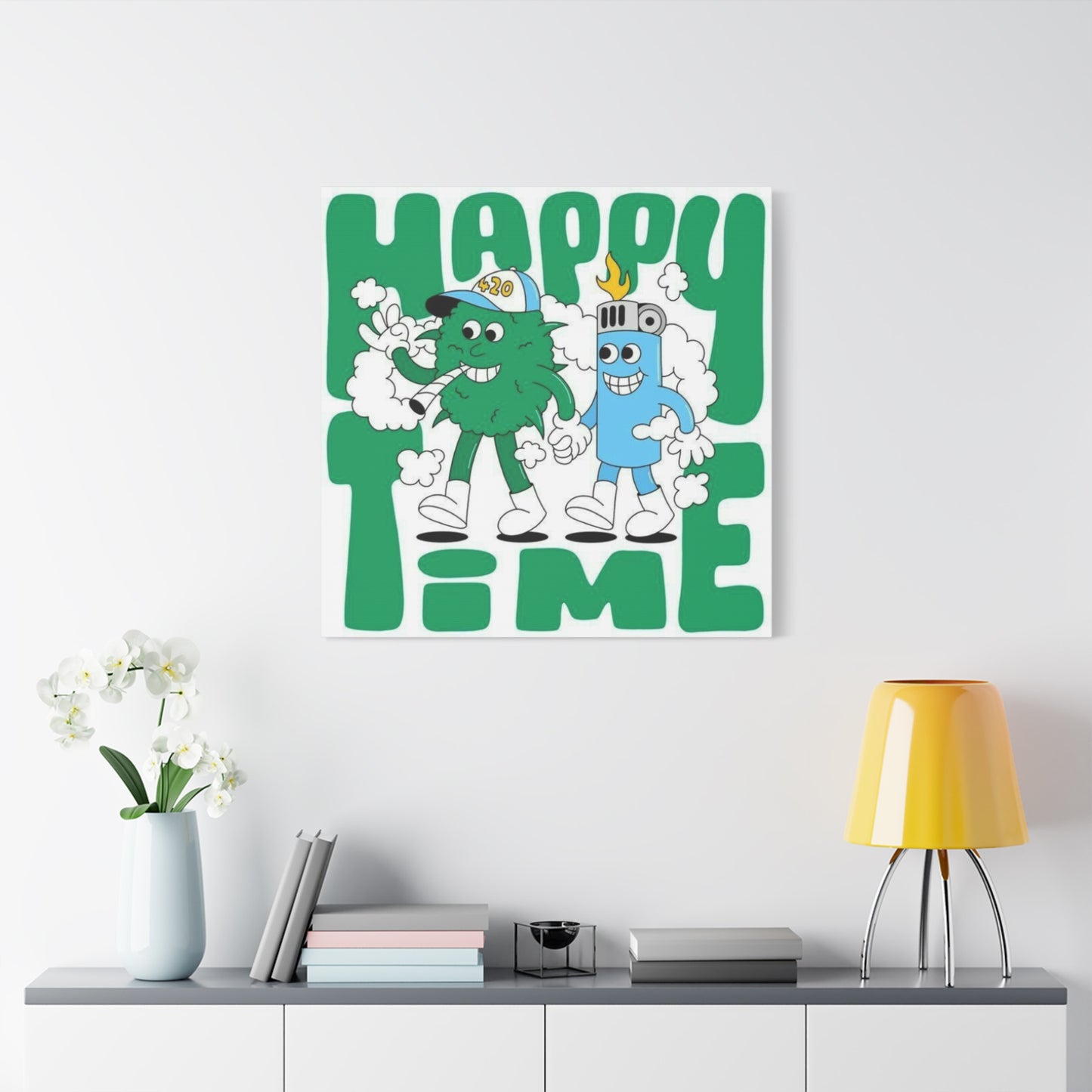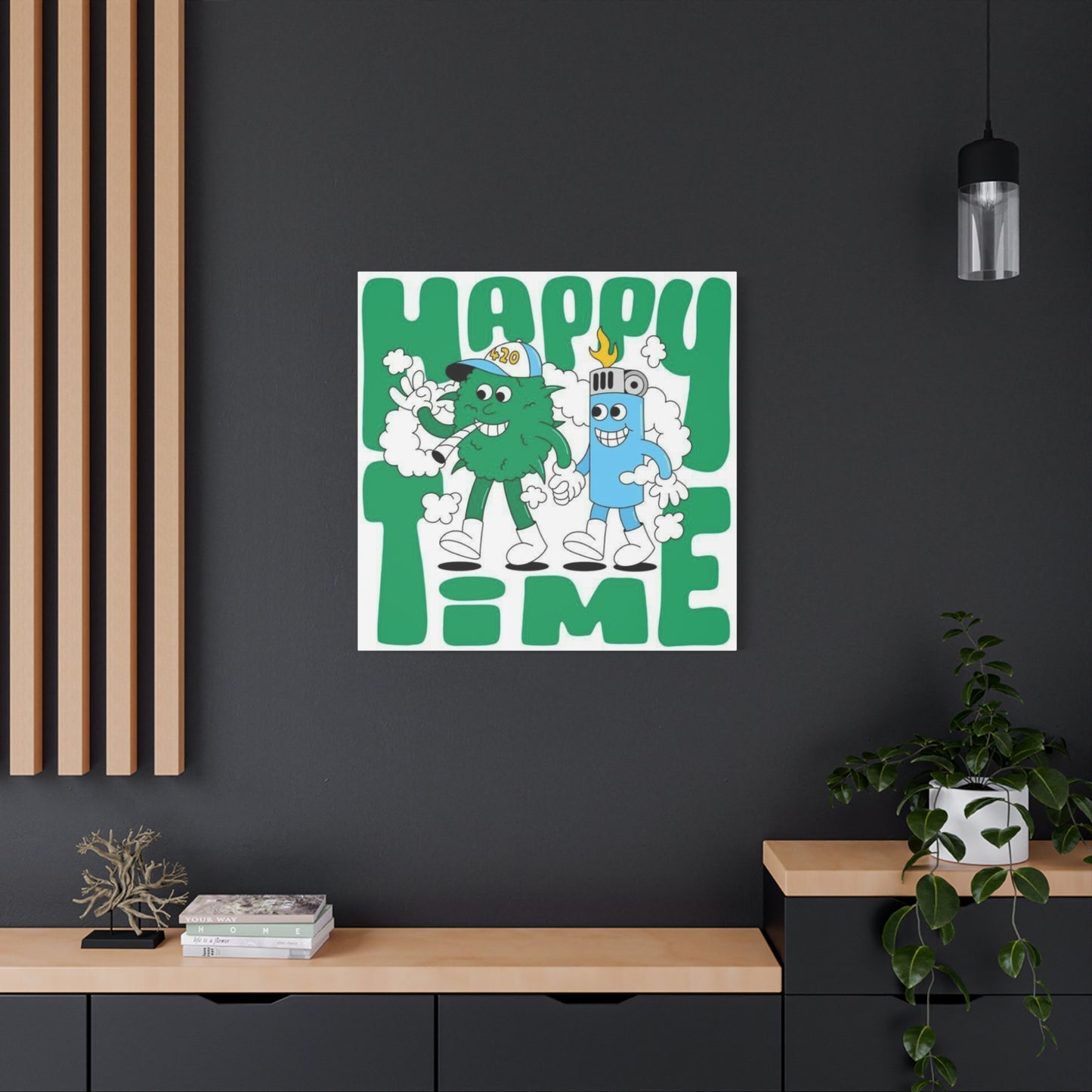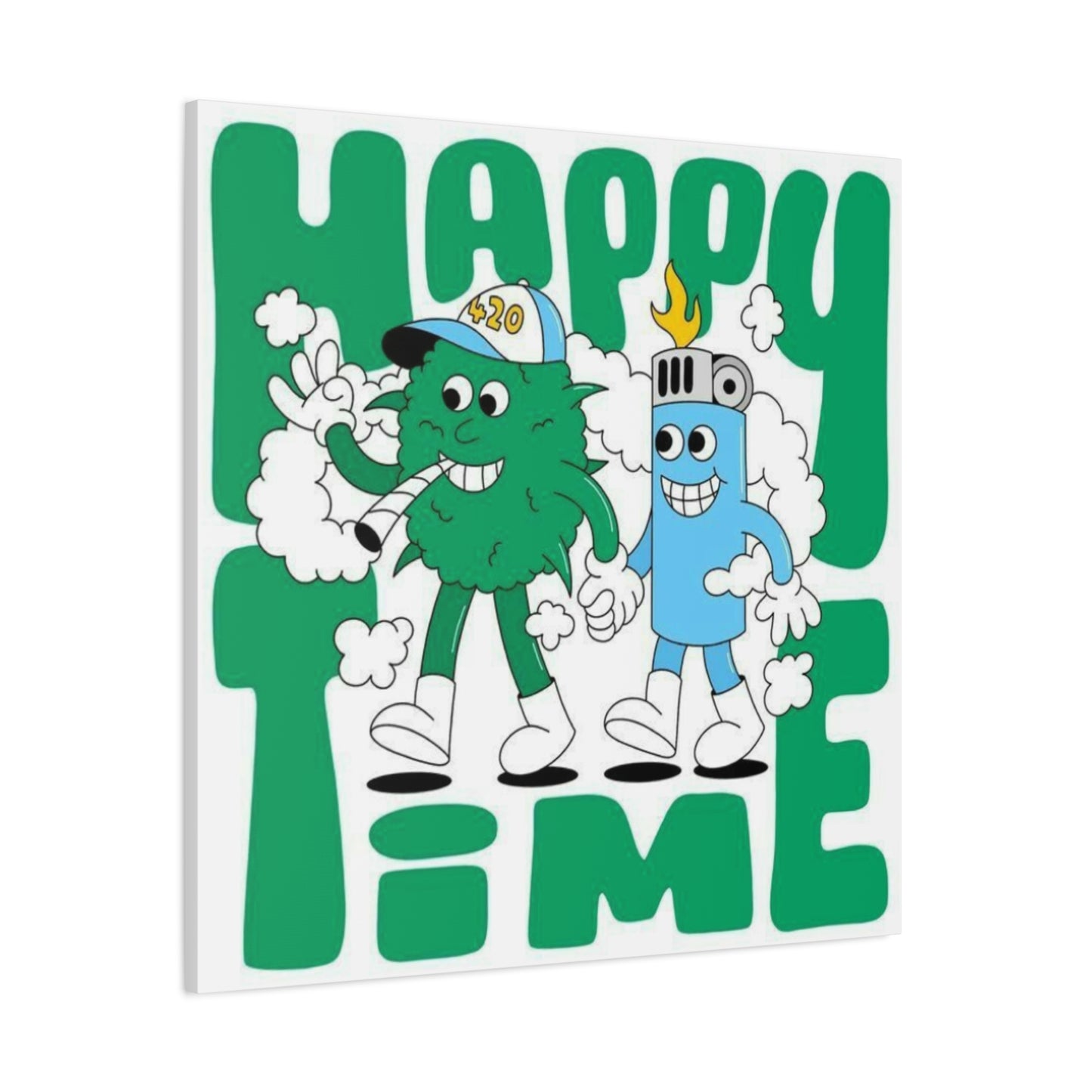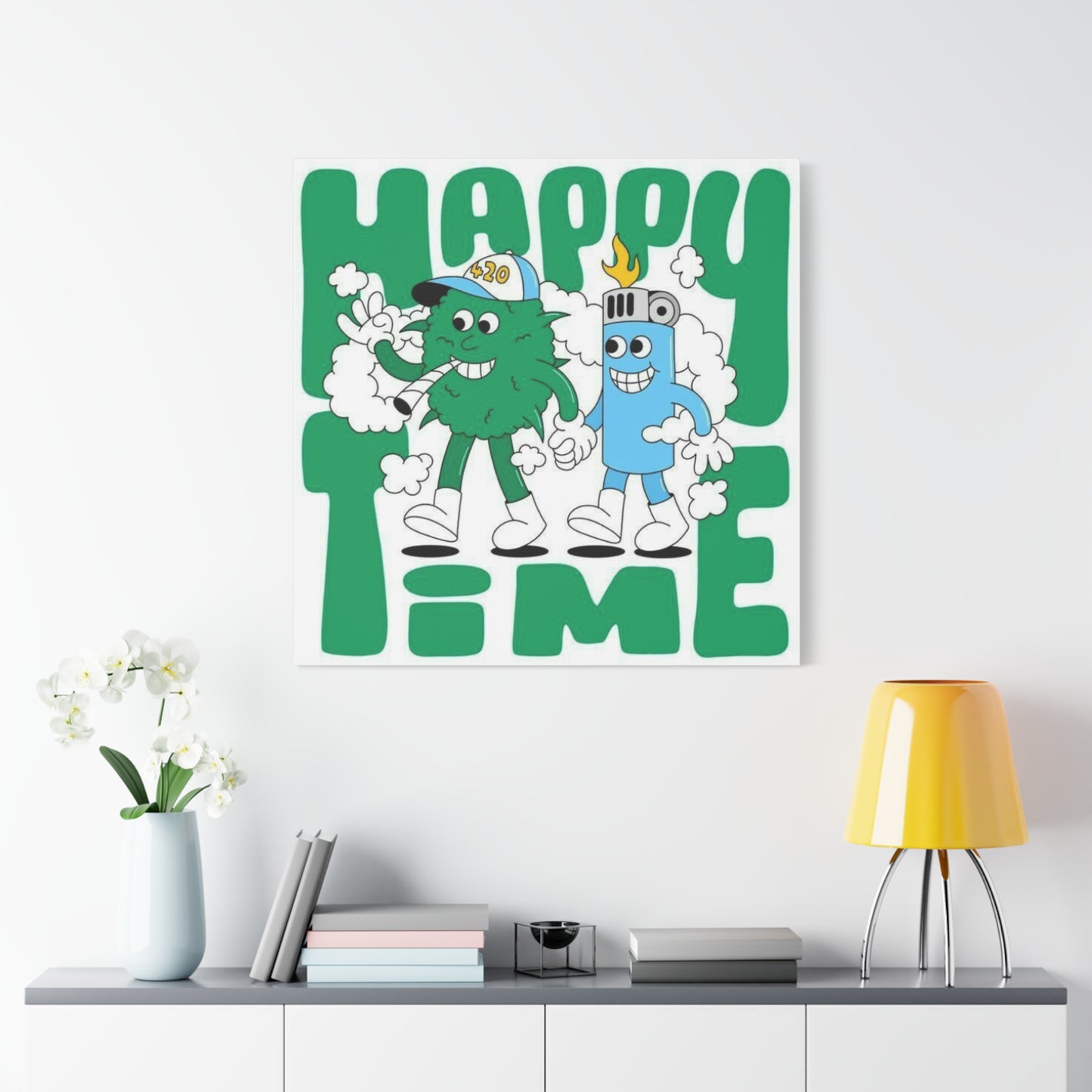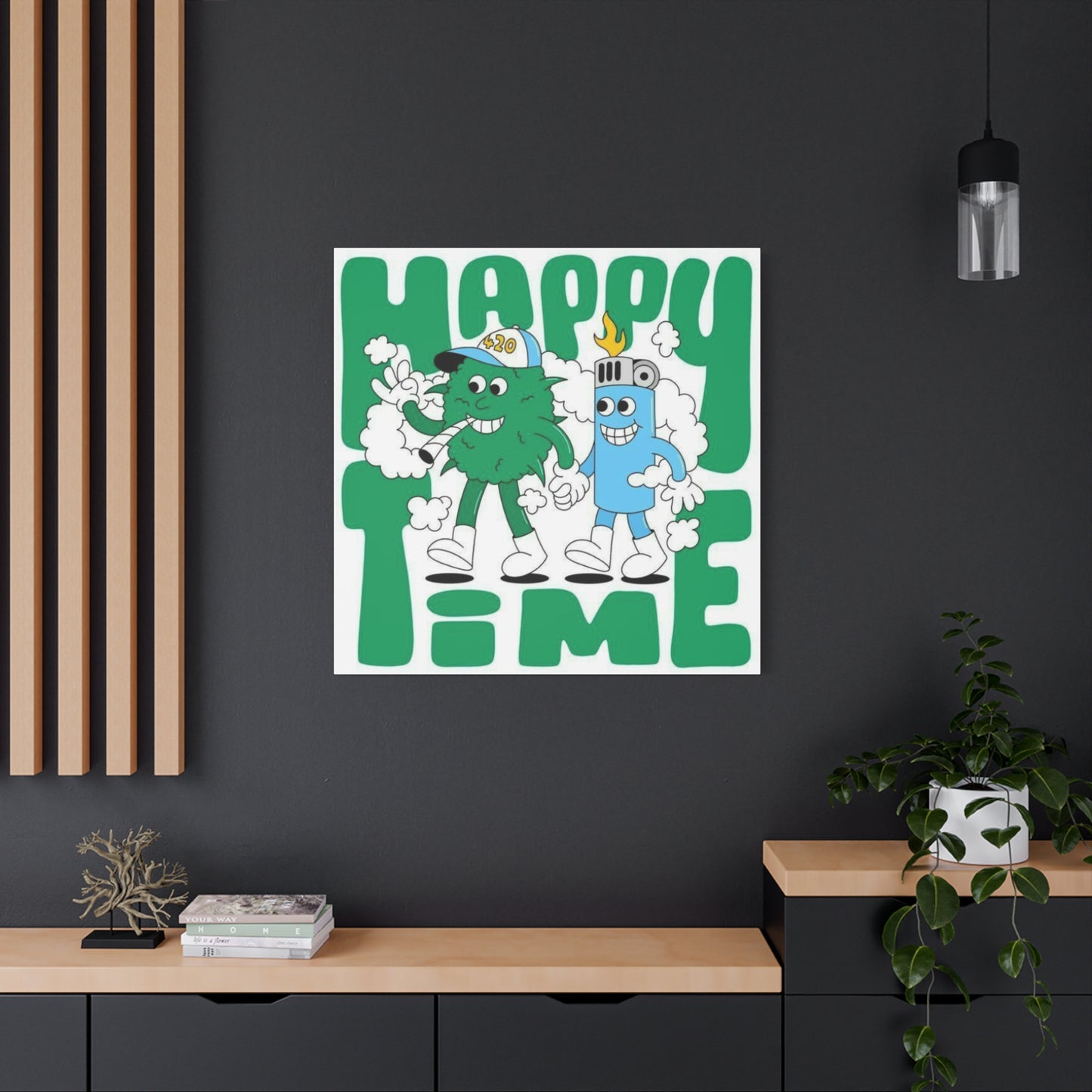Playful Marijuana Wall Art: Brighten Your Room with Happy Vibes
Cannabis-themed visual artwork has emerged as a powerful form of artistic expression, combining natural botanical elements with contemporary design aesthetics. This comprehensive exploration delves into the multifaceted world of hemp-inspired visual art, examining various styles, techniques, and applications that celebrate the cultural significance of this remarkable plant. From vibrant botanical illustrations to abstract interpretations, cannabis-themed artwork offers endless possibilities for creative expression and environmental enhancement.
The artistic representation of cannabis has evolved significantly over the decades, transitioning from underground counterculture symbols to mainstream decorative elements embraced by diverse communities. Artists worldwide have discovered innovative ways to incorporate the distinctive leaf patterns, organic forms, and cultural associations of cannabis into compelling visual narratives that resonate with contemporary audiences.
Joyful Cannabis-Themed Artistic Expressions
Creating artwork that celebrates the positive aspects of cannabis culture involves exploring themes of relaxation, creativity, and natural beauty. These artistic pieces often incorporate uplifting color palettes, whimsical design elements, and symbolic representations that evoke feelings of contentment and well-being. Artists frequently draw inspiration from the plant's natural characteristics, translating its organic forms into stylized interpretations that capture its essence while appealing to diverse aesthetic preferences.
The development of cannabis-themed artwork often begins with careful observation of the plant's unique structural characteristics. The distinctive serrated edges of cannabis leaves, their palmate arrangement, and the intricate network of veins provide rich source material for artistic interpretation. Artists may choose to emphasize these natural features through detailed botanical illustrations or abstract them into geometric patterns that maintain the essence while offering fresh perspectives.
Contemporary artists working with cannabis themes frequently explore the relationship between natural forms and human experience. They may incorporate elements that suggest growth, transformation, and renewal, reflecting the plant's role in various cultural and spiritual traditions. These artistic explorations often result in pieces that transcend simple representation, becoming meditative focal points that invite contemplation and discussion.
The emotional impact of cannabis-themed artwork extends beyond visual appeal, often serving as conversation starters and expressions of personal values. Many collectors appreciate these pieces for their ability to communicate openness, acceptance, and appreciation for natural diversity. The artwork becomes a form of visual advocacy, promoting understanding and reducing stigma through beautiful, thoughtful artistic expression.
Vibrant Cannabis Visual Art Creations
The use of bold, saturated colors in cannabis-themed artwork creates dynamic visual experiences that energize and inspire viewers. Artists working in this style often employ vivid greens, brilliant purples, electric blues, and warm golds to create striking compositions that celebrate the plant's natural beauty while pushing artistic boundaries. These colorful interpretations transform traditional botanical subjects into contemporary art statements that command attention and spark imagination.
Color theory plays a crucial role in developing effective cannabis-themed artwork. Artists must understand how different hues interact to create harmony or tension within their compositions. Complementary color schemes, such as purple and yellow or red and green, can create vibrant contrasts that make cannabis leaves appear to glow with inner light. Analogous color schemes using various shades of green can create soothing, naturalistic effects that emphasize the plant's organic qualities.
The psychological impact of color in cannabis-themed artwork cannot be overlooked. Warm colors like reds, oranges, and yellows tend to create feelings of energy and excitement, while cool colors like blues, greens, and purples often promote relaxation and contemplation. Artists may strategically combine these effects to create pieces that serve specific emotional or functional purposes within living environments.
Texture and color work together in vibrant cannabis artwork to create multi-dimensional visual experiences. Artists may use various techniques such as glazing, scumbling, or impasto to build layers of color that catch and reflect light differently. These textural variations add depth and interest to the artwork, creating pieces that reveal new details upon closer inspection and maintain visual appeal over time.
The evolution of digital art tools has expanded possibilities for creating colorful cannabis-themed artwork. Digital artists can experiment with color combinations and effects that would be difficult or impossible to achieve with traditional media. They can create gradient effects, manipulate transparency, and combine photographic elements with painted or drawn components to produce unique hybrid artworks that push the boundaries of traditional cannabis art.
Handcrafted Cannabis Artistic Projects
Creating original cannabis-themed artwork through do-it-yourself approaches allows artists to develop personal connections with their creative process while exploring unique artistic voices. These handmade projects range from simple mixed-media collages to complex multi-layered paintings that incorporate various materials and techniques. The DIY approach to cannabis art democratizes the creative process, making it accessible to individuals regardless of their formal artistic training or experience.
The materials available for DIY cannabis art projects are virtually limitless. Artists might incorporate natural elements like pressed leaves, hemp fibers, or seeds into their compositions, creating tactile pieces that connect viewers directly with the plant itself. Traditional art supplies such as watercolors, acrylics, colored pencils, and markers offer different expressive possibilities, while unconventional materials like coffee grounds, spices, or fabric scraps can add unique textures and visual interest.
Planning is essential for successful DIY cannabis art projects. Artists should consider their intended outcome, available materials, and skill level when designing their pieces. Sketching preliminary ideas helps clarify compositional elements and identify potential challenges before beginning the actual artwork. This preparatory phase also allows for experimentation with different approaches and techniques without committing significant time or materials to unproven concepts.
Documentation of the creative process adds value to DIY cannabis art projects. Photographing work-in-progress stages creates a visual record of artistic development while providing material for sharing experiences with others. This documentation can inspire other artists and contribute to the broader conversation about cannabis-themed art creation. Social media platforms and online communities provide venues for sharing these creative journeys and connecting with like-minded individuals.
The therapeutic benefits of creating handmade cannabis art should not be underestimated. The meditative aspects of repetitive artistic processes, combined with the positive associations many people have with cannabis culture, can create deeply relaxing and fulfilling creative experiences. These projects offer opportunities for stress relief, self-expression, and personal growth that extend far beyond the finished artwork itself.
Botanical Cannabis Leaf Artwork
The distinctive shape and structure of cannabis leaves provide rich inspiration for artists seeking to explore botanical themes through their work. These natural forms offer endless possibilities for interpretation, from scientifically accurate botanical illustrations to highly stylized artistic representations that capture the essence of the plant while serving decorative purposes. The challenge for artists lies in balancing botanical accuracy with creative expression to produce pieces that are both informative and visually compelling.
Understanding the botanical characteristics of cannabis leaves enhances artistic representation. The palmate compound leaf structure, with its distinctive serrated edges and prominent venation patterns, creates natural compositional elements that artists can emphasize or abstract according to their artistic vision. The varying sizes and shapes of leaflets within a single compound leaf provide opportunities for creating rhythm and movement within artistic compositions.
Light and shadow play crucial roles in botanical cannabis leaf artwork. The three-dimensional nature of leaves creates complex patterns of illumination that artists must observe carefully to create convincing representations. Understanding how light interacts with leaf surfaces, creating highlights on raised veins and casting shadows in recessed areas, enables artists to create drawings and paintings that appear dimensional and lifelike.
The seasonal variations in cannabis leaf appearance offer additional artistic possibilities. Young leaves often display different colors and textures than mature ones, while autumn changes can introduce spectacular color variations that provide inspiration for vibrant artistic interpretations. Artists may choose to document these seasonal changes through series of related artworks that explore the plant's complete life cycle.
Scientific illustration techniques can enhance botanical cannabis leaf artwork by providing frameworks for accurate representation. Methods such as cross-hatching, stippling, and careful attention to proportional relationships help create artwork that serves both artistic and educational purposes. These technically proficient pieces can appeal to audiences interested in both art and botanical science, expanding the potential market and appreciation for cannabis-themed artwork.
Non-Representational Cannabis Visual Art
Abstract interpretations of cannabis themes allow artists to explore the emotional and spiritual associations of the plant without being constrained by literal representation. These artworks may incorporate organic forms, flowing lines, and symbolic elements that evoke cannabis culture while remaining open to individual interpretation. The abstract approach enables artists to focus on mood, energy, and conceptual content rather than precise botanical accuracy.
Color and form relationships become primary expressive tools in abstract cannabis artwork. Artists may use flowing, organic shapes that suggest growth and natural processes, while color choices can evoke various moods and associations related to cannabis culture. The freedom from representational constraints allows for bold experimentation with composition, texture, and visual effects that might not work in more literal approaches.
The development of abstract cannabis artwork often begins with meditation on the artist's personal relationship with cannabis culture. This introspective process helps identify key emotions, memories, and associations that can be translated into visual elements. The resulting artwork becomes a personal statement that communicates the artist's unique perspective on cannabis and its cultural significance.
Layering techniques work particularly well in abstract cannabis artwork, allowing artists to build complex visual relationships that reveal themselves gradually to viewers. Transparent glazes, mixed media applications, and collage elements can create depth and interest that reward careful observation. These multi-layered approaches reflect the complex cultural and personal relationships many people have with cannabis.
The interpretation of abstract cannabis artwork remains intentionally open-ended, allowing viewers to project their own experiences and associations onto the visual elements. This interpretive freedom creates opportunities for meaningful dialogue between artwork and audience, fostering deeper engagement and personal connection with the artistic content. The abstract approach thus serves both artistic and social purposes in advancing understanding and acceptance of cannabis culture.
Brilliant Color Applications in Cannabis Art
The strategic use of bright, luminous colors in cannabis-themed artwork creates visual impact that commands attention and conveys energy and vitality. These intense color applications can transform simple cannabis motifs into dynamic artistic statements that serve as focal points in any environment. Artists working with bright colors must understand color relationships and psychological effects to create harmonious yet energetic compositions.
Fluorescent and neon colors offer particularly striking options for cannabis artwork, creating pieces that seem to glow with internal energy. These intense hues can be especially effective when used selectively as accent colors against more neutral backgrounds, creating dramatic contrast and visual pop. The key to successful bright color application lies in balancing intensity with compositional harmony to avoid overwhelming viewers.
The cultural associations of specific colors add layers of meaning to bright cannabis artwork. Green, the natural color of cannabis plants, might be intensified to electric lime or forest depths to suggest different aspects of the cannabis experience. Purple hues can reference certain cannabis strains while adding regal elegance to artistic compositions. Golden yellows might suggest enlightenment or spiritual awakening associated with cannabis use.
Technical considerations become crucial when working with bright colors in cannabis art. Some pigments may fade over time when exposed to light, while others may interact chemically with adjacent colors or substrates. Artists must understand the permanence and compatibility of their chosen materials to ensure their bright cannabis artwork maintains its visual impact over time.
The emotional impact of bright colors in cannabis artwork extends beyond initial visual impression. Research in color psychology suggests that vibrant hues can influence mood, energy levels, and overall well-being. Cannabis artwork incorporating bright colors may therefore serve therapeutic purposes, contributing to positive environmental psychology in residential or commercial settings where the artwork is displayed.
Cannabis Art for Tranquil Environments
Creating cannabis-themed artwork specifically designed to promote relaxation and peace requires careful consideration of color palettes, compositional elements, and overall mood. These pieces often incorporate soft, muted colors and flowing, organic forms that evoke feelings of calm and contentment. The goal is to create visual environments that support meditation, rest, and stress relief while maintaining the distinctive character of cannabis-themed art.
Soft color palettes work particularly well in relaxation-focused cannabis artwork. Muted greens, gentle blues, and warm earth tones create soothing visual environments that promote rest and contemplation. These colors can be combined with subtle gradients and soft transitions that avoid harsh contrasts or jarring visual elements that might disturb peaceful moods.
The compositional flow in relaxing cannabis artwork should guide viewers' eyes smoothly through the piece without creating tension or visual obstacles. Curved lines, gentle spirals, and organic shapes that echo natural growth patterns help create this sense of visual flow. Artists may incorporate elements that suggest gentle movement, like leaves swaying in a breeze, to add life to the artwork without creating excitement or agitation.
Texture plays an important role in cannabis artwork designed for relaxation. Soft, subtle textures that invite touch can enhance the calming effect of the visual elements. Artists might use techniques like soft brushwork, gentle blending, or the incorporation of natural materials to create tactile appeal that complements the peaceful visual message.
The scale and placement of relaxing cannabis artwork require thoughtful consideration. Pieces intended for relaxation are often most effective when sized appropriately for intimate viewing, allowing observers to engage closely with the artwork without feeling overwhelmed. The positioning should support the artwork's calming function, perhaps in areas designated for rest, meditation, or quiet contemplation.
Professional Display Methods for Cannabis Art
Proper framing and presentation elevate cannabis-themed artwork from simple decoration to sophisticated artistic statement. The choice of frame, matting, and display method can significantly impact how viewers perceive and appreciate the artwork. Professional presentation techniques help cannabis art gain acceptance in diverse environments while protecting the investment in original artwork.
Frame selection should complement both the artwork's style and the intended display environment. Traditional wooden frames work well for botanical-style cannabis artwork, while contemporary metal frames might better suit abstract or modern interpretations. The frame should enhance rather than compete with the artwork, providing appropriate boundaries without overwhelming the visual content.
Matting serves both protective and aesthetic functions in cannabis art presentation. Acid-free materials prevent chemical interaction with the artwork over time, while the mat size and color can dramatically affect the piece's visual impact. Larger mats create more breathing room around the artwork, while colored mats can either complement or contrast with the piece to achieve different effects.
Lighting considerations become crucial for properly displaying cannabis artwork. Natural light can enhance color accuracy but may cause fading over time, while artificial lighting offers more control but may alter color perception. LED lighting systems provide energy-efficient options with adjustable color temperature and intensity, allowing for optimal presentation without heat damage or excessive energy consumption.
The grouping and arrangement of multiple cannabis art pieces requires careful planning to create cohesive displays. Artists and collectors should consider factors such as scale relationships, color harmony, and thematic connections when arranging multiple pieces. Proper spacing between pieces allows each work to maintain its individual impact while contributing to the overall display composition.
Conservation considerations ensure cannabis artwork remains in excellent condition for future appreciation. This includes controlling environmental factors such as humidity, temperature, and light exposure, as well as using appropriate materials for mounting and framing. Professional conservation techniques help preserve both the artistic and monetary value of cannabis artwork collections.
Cannabis Art Acquisition and Sources
The growing popularity of cannabis-themed artwork has created diverse marketplaces where collectors can find pieces ranging from affordable prints to original masterworks. Understanding these various sources helps buyers make informed decisions about their cannabis art acquisitions while supporting artists working in this specialized field. The market continues to evolve as cannabis culture gains mainstream acceptance.
Online marketplaces offer convenient access to cannabis artwork from artists worldwide. These platforms allow buyers to browse extensive catalogs, compare prices, and read reviews from other purchasers. However, online buying requires careful attention to image quality, size specifications, and return policies to ensure satisfaction with purchases that cannot be examined in person before buying.
Local art fairs and cannabis-friendly events provide opportunities to view cannabis artwork in person while meeting the artists who created it. These face-to-face interactions often lead to better understanding of the artistic process and the stories behind specific pieces. Direct artist relationships can also result in commission opportunities for custom cannabis artwork tailored to specific preferences or requirements.
Gallery representation for cannabis artists continues to expand as social attitudes toward cannabis evolve. Progressive galleries recognize the artistic merit and market demand for high-quality cannabis-themed artwork, providing professional presentation and marketing support for artists working in this field. Gallery purchases often include authentication and provenance documentation that adds value to the acquisition.
The investment potential of cannabis artwork depends on various factors including artist reputation, piece uniqueness, and market trends. As with any art investment, buyers should research artists' backgrounds, previous sales history, and critical reception. The evolving legal and social landscape around cannabis suggests potential for appreciation in value for well-chosen pieces by talented artists.
Custom commissioning allows collectors to acquire cannabis artwork specifically designed for their unique preferences and environments. This approach ensures perfect fit with existing decor while supporting artists directly. Commission projects require clear communication about expectations, timelines, and budgets to ensure satisfactory outcomes for both parties.
Cannabis Art in Residential Living Areas
Incorporating cannabis-themed artwork into living room environments requires sensitivity to both aesthetic principles and social considerations. These primary gathering areas in homes provide opportunities to display cannabis art in ways that reflect personal values while remaining welcoming to diverse guests. Successful integration depends on choosing appropriate pieces and positioning them thoughtfully within the existing decor.
Scale relationships become particularly important when placing cannabis artwork in living areas. Large pieces can serve as dramatic focal points above seating areas or fireplaces, while smaller works might be grouped to create interesting wall compositions. The artwork should relate proportionally to furniture and architectural elements to create visual harmony throughout the room.
Color coordination between cannabis artwork and existing decor elements helps create cohesive living environments. Artists and collectors can choose pieces that either complement existing color schemes or provide controlled contrast that adds visual interest without creating conflict. The artwork's colors should support the room's overall mood and function rather than competing with other decorative elements.
The conversation-starting potential of cannabis artwork in living areas can be managed through thoughtful selection and placement. Pieces that focus on botanical beauty or abstract interpretations may generate different discussions than more obviously cannabis-culture-specific artwork. Understanding the desired social dynamic helps inform appropriate artistic choices for these social environments.
Lighting design plays a crucial role in showcasing cannabis artwork within living areas. Accent lighting can highlight specific pieces while contributing to the room's overall ambiance. The interplay between natural and artificial light throughout daily and seasonal cycles should be considered when positioning cannabis artwork to ensure consistent visual appeal.
The flexibility to rearrange or rotate cannabis artwork collections allows living areas to evolve with changing preferences and social situations. Modular hanging systems or easel displays can facilitate these changes while protecting wall surfaces and artwork integrity. This adaptability helps maintain fresh visual interest while accommodating different needs over time.
Humorous Cannabis-Themed Visual Art
Comedy and cannabis culture have long intersected, creating opportunities for artists to explore humorous themes while celebrating the lighter side of cannabis appreciation. These playful artworks can serve as conversation pieces that break social tension while expressing personality and sense of humor. The challenge lies in creating pieces that are genuinely funny without relying on tired stereotypes or potentially offensive content.
Wordplay and visual puns offer rich sources for humorous cannabis artwork. Artists can play with cannabis terminology, creating clever double meanings that amuse viewers while demonstrating linguistic creativity. These verbal-visual combinations often work best when they surprise viewers with unexpected connections or interpretations that reveal themselves upon closer examination.
Character development in humorous cannabis art allows for ongoing storytelling potential through series of related pieces. Anthropomorphized cannabis plants, quirky human characters, or imaginary creatures associated with cannabis culture can provide frameworks for exploring various humorous scenarios. These character-based approaches help create memorable artistic personas that viewers can relate to and anticipate in future works.
The artistic techniques used in humorous cannabis artwork often emphasize exaggeration, unexpected juxtapositions, and visual surprise. Cartoon-style illustration, collage elements from popular culture, and surreal combinations can create the unexpected visual relationships that generate humor. The key is maintaining enough artistic sophistication to appeal to serious art collectors while delivering genuine comedic content.
Cultural references in humorous cannabis artwork must be handled carefully to ensure broad appeal without excluding potential audiences. References that are too specific to particular subcultures may limit the artwork's accessibility, while overly general humor may lack the specificity that makes it memorable. Finding the right balance requires understanding both cannabis culture and broader comedic traditions.
The social function of humorous cannabis artwork extends beyond entertainment to include education and advocacy. Humor can make cannabis topics more approachable for audiences who might otherwise feel uncomfortable with the subject matter. Well-crafted humorous pieces can reduce stigma while promoting understanding and acceptance through positive emotional associations.
Historical Cannabis Art Movements
The aesthetic associated with vintage cannabis artwork draws from various historical periods and artistic movements, creating pieces that evoke nostalgia while celebrating cannabis culture's rich heritage. These historical references can include Art Nouveau botanical illustrations, 1960s psychedelic poster designs, or 1970s earth-tone palettes that connect contemporary cannabis art with its cultural roots.
Art Nouveau influences appear in cannabis artwork through organic, flowing lines and naturalistic representations that emphasize the plant's inherent beauty. This late 19th and early 20th-century movement's focus on natural forms provides perfect inspiration for cannabis artists seeking to create elegant, sophisticated pieces that transcend subcultural associations while maintaining botanical accuracy and artistic refinement.
The psychedelic art movement of the 1960s and 1970s created visual vocabularies that remain strongly associated with cannabis culture. Contemporary artists can reference these historical styles while updating them with modern techniques and sensibilities. This approach creates artwork that honors cannabis culture history while remaining relevant to current audiences and aesthetic preferences.
Mid-century modern design elements work particularly well in vintage-inspired cannabis artwork. Clean lines, bold geometric shapes, and carefully chosen color palettes characteristic of this period can be combined with cannabis motifs to create pieces that fit seamlessly into contemporary environments while maintaining historical character and charm.
The craftsmanship associated with vintage cannabis artwork often emphasizes hand-executed techniques over digital production methods. Screen printing, lithography, and traditional painting methods create authentic vintage aesthetics that cannot be replicated through modern digital processes. These traditional techniques add value and character that appeals to collectors seeking authentic artistic experiences.
Reproduction considerations for vintage-style cannabis artwork must balance historical accuracy with contemporary production realities. While original vintage pieces may be rare and expensive, high-quality reproductions can make these styles accessible to broader audiences. The key lies in maintaining the essential character and quality that makes vintage cannabis artwork appealing while utilizing appropriate contemporary production methods.
Simplified Cannabis Design Approaches
Minimalist cannabis artwork focuses on essential elements while eliminating unnecessary visual complexity, creating pieces that communicate clearly and elegantly without overwhelming viewers. This approach requires careful consideration of what to include and what to omit, resulting in artwork that achieves maximum impact through conscious simplification and refined execution.
Negative environment plays a crucial role in minimalist cannabis art by providing breathing room around key visual elements. This empty area isn't truly empty but serves active compositional purposes by directing attention, creating balance, and allowing the viewer's eye to rest. Understanding how to use negative environment effectively separates successful minimalist cannabis artwork from pieces that simply lack content.
Line quality becomes paramount in minimalist cannabis artwork where every mark must justify its presence. Artists working in this style develop sensitivity to line weight, direction, and character, using these elements to convey maximum information with minimum means. A single well-placed line can suggest form, movement, and emotion more effectively than complex details in minimalist compositions.
Color reduction in minimalist cannabis artwork often involves limiting palettes to two or three carefully chosen hues, or sometimes working entirely in monochrome. These restricted color schemes force artists to rely on value relationships, composition, and form to create visual interest. The resulting pieces often possess a sophisticated elegance that appeals to contemporary aesthetic sensibilities.
The philosophical aspects of minimalist cannabis artwork align with certain meditation and mindfulness practices associated with cannabis culture. The visual clarity and simplicity can promote contemplative states while reducing visual stress and anxiety. These pieces work particularly well in environments designed for relaxation, meditation, or focused mental work.
Production efficiency represents a practical advantage of minimalist cannabis artwork. Simplified designs can often be executed more quickly and with fewer materials than complex pieces, making them accessible to artists with limited resources or time constraints. This efficiency can also translate to more affordable pricing for collectors seeking quality cannabis artwork without premium costs.
Cannabis Art for Creative Environments
Artists, writers, musicians, and other creative professionals often seek environmental elements that support and inspire their work. Cannabis-themed artwork designed for creative environments should stimulate imagination while avoiding distraction from productive activities. These pieces often incorporate elements that suggest inspiration, flow states, and creative energy while maintaining enough visual interest to reward casual observation during work breaks.
The psychological impact of environmental art on creative productivity has been documented in various studies, suggesting that thoughtfully chosen visual elements can enhance creative thinking and problem-solving abilities. Cannabis artwork designed for creative environments often incorporates organic forms, flowing lines, and growth metaphors that unconsciously support creative mental processes.
Color psychology becomes particularly important in cannabis artwork for creative environments. Colors that promote alertness and mental clarity, such as certain yellows and greens, can support active creative work, while blues and purples might be chosen for environments focused on contemplative or introspective creative activities. Understanding these color relationships helps artists and collectors choose appropriate pieces for specific creative functions.
The scale and complexity of cannabis artwork in creative environments should support rather than compete with the primary creative activities. Large, complex pieces might overwhelm small studios, while tiny artworks might get lost in expansive creative venues. The goal is to find visual elements that provide inspiration and pleasant atmosphere without becoming distracting focal points during intensive creative work.
Flexibility in cannabis artwork display becomes valuable in creative environments that serve multiple functions or change configuration frequently. Modular display systems, rotating collections, or easily moveable pieces allow creative professionals to modify their visual environment according to current projects or moods. This adaptability helps maintain fresh inspiration over time.
The storytelling potential of cannabis artwork in creative environments can provide narrative inspiration for various creative projects. Pieces that suggest stories, evoke emotions, or present interesting visual problems can serve as creative prompts for writers, artists, or other creative professionals seeking fresh perspectives on their work.
Mixed Media Cannabis Artistic Works
The combination of cannabis leaf elements with other artistic materials creates opportunities for rich, textural artworks that engage viewers on multiple sensory levels. These mixed media approaches might incorporate actual plant materials, fabric elements, found objects, or digital components to create unique pieces that transcend traditional artistic categories while exploring cannabis themes in innovative ways.
Incorporating actual cannabis plant materials into artwork raises both artistic and legal considerations. Artists must understand local regulations regarding cannabis plant possession and display while exploring the artistic potential of these natural materials. Pressed leaves, hemp fibers, or seed elements can add authentic texture and meaning to mixed media cannabis artwork when used within appropriate legal frameworks.
Collage techniques work particularly well in mixed media cannabis artwork, allowing artists to combine photographic elements, painted sections, printed materials, and dimensional objects into cohesive compositions. These approaches can create rich visual narratives that explore various aspects of cannabis culture while maintaining artistic sophistication and visual appeal.
The preservation of mixed media cannabis artwork requires special consideration due to the variety of materials involved. Different components may age at different rates or have varying preservation requirements, necessitating careful material choices and conservation approaches. Understanding these technical aspects helps ensure mixed media cannabis artwork maintains its integrity over time.
Three-dimensional elements in mixed media cannabis artwork create opportunities for interactive or sculptural pieces that extend beyond traditional flat artwork categories. These dimensional components can cast shadows, create depth, and invite closer examination that reveals additional artistic details. The interplay between flat and dimensional elements adds complexity and visual interest to mixed media compositions.
The conceptual possibilities of mixed media cannabis artwork extend beyond simple decoration to explore themes of transformation, growth, and cultural synthesis. Artists can use the combination of materials to suggest metaphorical connections between cannabis and other aspects of human experience, creating pieces that function as visual essays on cannabis culture and its place in contemporary society.
Cannabis Art as Gift Options
Cannabis-themed artwork makes thoughtful gifts for individuals who appreciate both artistic beauty and cannabis culture. These gifts can range from affordable prints suitable for casual giving to significant original pieces appropriate for major occasions. Understanding the recipient's aesthetic preferences, living situation, and comfort level with cannabis themes helps ensure gift selections that will be appreciated and displayed with pride.
The occasion appropriateness of cannabis artwork gifts varies depending on social context and relationship dynamics. Pieces that emphasize botanical beauty or abstract interpretations may be suitable for a broader range of occasions than those with obvious cannabis culture references. Understanding these social nuances helps gift-givers choose appropriate pieces that express thoughtfulness without creating uncomfortable situations.
Presentation packaging for cannabis artwork gifts should reflect the quality and significance of the artwork itself. Professional framing, protective wrapping, and attractive packaging demonstrate respect for both the art and the recipient. These presentation details often determine the initial impact and perceived value of cannabis artwork gifts.
The educational potential of cannabis artwork gifts provides opportunities to share knowledge and appreciation for cannabis culture through beautiful visual presentations. High-quality cannabis artwork can serve as conversation starters that promote understanding and acceptance while providing lasting aesthetic value. The gift of art becomes a gift of perspective and appreciation.
Custom commissioning options for cannabis artwork gifts allow for personalization that demonstrates special thoughtfulness and attention to the recipient's preferences. Working with artists to create unique pieces that incorporate specific colors, themes, or personal elements creates one-of-a-kind gifts that cannot be purchased elsewhere. These custom pieces often become treasured possessions with deep personal significance.
The investment aspect of cannabis artwork gifts should be considered when choosing pieces for significant occasions. High-quality original artworks or limited edition prints may appreciate in value over time, making them gifts that provide both immediate aesthetic pleasure and potential long-term financial benefit. Understanding the art market helps gift-givers make informed choices that maximize both artistic and investment value.
Integrating Cannabis Art in Home Environments
Successfully incorporating cannabis-themed artwork into home decor requires balancing personal expression with aesthetic harmony and social considerations. The key lies in choosing pieces that reflect individual values and interests while maintaining visual coherence with existing decor elements. This integration process involves careful attention to scale, color relationships, and thematic connections between cannabis artwork and other decorative elements.
Room function significantly influences appropriate cannabis artwork selections for home integration. Private areas like bedrooms or personal offices offer more freedom for bold or personal cannabis art choices, while public areas like entry halls or guest bathrooms might require more universally appealing pieces. Understanding these functional differences helps create appropriate artistic environments throughout the home.
The architectural characteristics of home environments affect cannabis artwork display options. High ceilings can accommodate large-scale pieces that would overwhelm smaller rooms, while intimate areas might benefit from smaller, more detailed works that reward close examination. Window placement, natural light patterns, and existing focal points should all influence cannabis artwork positioning decisions.
Style consistency throughout home environments can be maintained while incorporating diverse cannabis artwork by focusing on unifying elements such as color palettes, frame styles, or thematic approaches. This consistency creates visual flow between rooms while allowing for varied artistic expressions within the overall cannabis art collection. The goal is coherence rather than rigid uniformity.
The temporal aspects of home cannabis artwork integration should account for changing preferences, social situations, and life circumstances. Flexible display systems allow for seasonal rotations, temporary removals for special occasions, or gradual collection expansion over time. This adaptability ensures cannabis artwork remains a positive element in home environments rather than a source of regret or social anxiety.
Professional consultation services can assist homeowners in successfully integrating cannabis artwork into their environments. Interior design professionals with experience in cannabis-friendly decor can provide valuable guidance on selection, placement, and coordination issues. These expert perspectives can help avoid common mistakes while maximizing the positive impact of cannabis artwork in home settings.
Cannabis Art in Professional Environments
The incorporation of cannabis-themed artwork in office and commercial environments requires careful consideration of workplace culture, client relationships, and professional image considerations. While cannabis legalization and cultural acceptance continue to evolve, professional environments present unique challenges and opportunities for cannabis art display that must be navigated thoughtfully.
Industry context significantly influences the appropriateness of cannabis artwork in professional environments. Creative industries, cannabis-related businesses, and progressive companies may embrace cannabis art as expressions of company culture and values, while more conservative industries might find such artwork problematic. Understanding industry norms and expectations helps determine appropriate artistic choices for professional settings.
The subtlety spectrum in professional cannabis artwork ranges from obvious cannabis imagery to abstract pieces that reference cannabis themes without explicit representation. More subtle approaches often work better in professional environments where cannabis artwork serves aesthetic rather than advocacy purposes. These pieces can provide visual interest while avoiding potential conflicts with diverse professional audiences.
Client consideration becomes crucial when selecting cannabis artwork for professional environments that host business meetings or client visits. Pieces that might be perfectly appropriate for internal audiences could create uncomfortable situations with certain clients or business partners. Having flexible display options allows for appropriate modifications based on specific business situations.
Legal compliance issues may affect cannabis artwork display in certain professional environments. Some industries or government contracts may have specific restrictions regarding cannabis-related content, even in artistic form. Understanding these requirements helps avoid potential compliance problems while maintaining appropriate professional environments.
The employee morale and company culture implications of cannabis artwork in professional environments can be complex and varied. Some employees may appreciate cannabis art as expressions of progressive values and openness, while others might find such artwork inappropriate for professional settings. Gauging employee sentiment and establishing clear policies helps navigate these potentially sensitive issues.
Contemporary Cannabis Art Movements
Current trends in cannabis artwork reflect broader cultural shifts toward acceptance and normalization while embracing cutting-edge artistic techniques and technologies. These modern approaches often combine traditional cannabis themes with contemporary artistic methods, creating pieces that appeal to both cannabis culture enthusiasts and mainstream art collectors seeking innovative contemporary artwork.
Digital art technologies have opened new possibilities for cannabis artwork creation and distribution. Artists can now create complex digital compositions, manipulate photographic elements, and produce high-quality prints that were impossible with traditional techniques alone. These technological capabilities enable rapid experimentation and precise control over artistic outcomes while reducing material costs and environmental impact.
The fusion of cannabis themes with other contemporary art movements creates interesting hybrid styles that expand the boundaries of traditional cannabis artwork. Environmental art incorporating cannabis themes, street art celebrating cannabis culture, and performance art exploring cannabis experiences all represent contemporary approaches to cannabis artistic expression that transcend traditional medium and venue limitations.
Social media platforms have dramatically influenced contemporary cannabis art distribution and appreciation. Artists can now reach global audiences directly, receive immediate feedback on their work, and participate in online cannabis art communities that provide support and inspiration. These digital connections have democratized both cannabis art creation and collection while building stronger communities around cannabis artistic expression.
The commercial gallery acceptance of cannabis artwork continues to evolve as social attitudes change and market demand increases. Progressive galleries recognize the artistic merit and commercial potential of high-quality cannabis-themed artwork, providing professional representation and marketing support that elevates cannabis art from niche interest to legitimate artistic category.
Collaboration opportunities between cannabis artists and other creative professionals are creating innovative cross-disciplinary works that explore cannabis themes through multiple artistic lenses. Musicians, writers, filmmakers, and other artists are working with visual artists to create comprehensive artistic experiences that celebrate cannabis culture through various creative media simultaneously.
Cannabis Art and Popular Culture Integration
The relationship between cannabis artwork and popular culture continues to evolve as cannabis themes become more mainstream in entertainment, fashion, and lifestyle products. This cultural integration creates new opportunities for cannabis artists while expanding the audience for cannabis-themed artwork beyond traditional cannabis culture boundaries into broader popular culture appreciation.
Entertainment industry connections have brought cannabis artwork into mainstream visibility through product placement, set decoration, and promotional materials for cannabis-themed media content. These appearances help normalize cannabis artwork while exposing it to audiences who might not otherwise encounter cannabis-themed artistic expression. The exposure can lead to increased appreciation and market demand for high-quality cannabis artwork.
Fashion industry collaborations have created opportunities for cannabis artwork to appear on clothing, accessories, and lifestyle products that reach diverse consumer markets. These applications require artistic adaptations to work effectively on different materials and scales while maintaining the essential character of the original artwork. Successful fashion collaborations can significantly expand artist exposure and income opportunities.
Celebrity endorsements and collections have elevated certain cannabis artists and artwork to higher visibility and market status. When public figures display or promote cannabis artwork, it can dramatically increase both artistic credibility and commercial value. These celebrity connections help bridge the gap between cannabis culture and mainstream artistic appreciation.
The merchandising potential of cannabis artwork extends beyond traditional art sales to include various product applications such as home decor items, stationery, technology accessories, and promotional materials. These derivative products can provide ongoing income streams for artists while making cannabis artistic designs accessible to broader consumer markets at various price points.
Music industry connections create natural partnerships between cannabis artists and musicians who share similar cultural values and audience interests. Album artwork, concert merchandise, and promotional materials provide venues for cannabis artistic expression while supporting musical artists who celebrate cannabis culture. These collaborative relationships benefit both artistic communities.
Conclusion
Playful marijuana wall art is a vibrant and uplifting way to infuse your living space with positive energy, creativity, and a touch of modern culture. Moving beyond traditional or controversial perceptions, this style of art celebrates the joyful and relaxed vibes associated with cannabis culture, using bright colors, whimsical designs, and imaginative motifs to create a fun, welcoming atmosphere. Whether you're looking to brighten a bedroom, living room, or creative studio, playful marijuana wall art adds a unique and happy spirit to any room.
One of the standout features of this art style is its ability to blend contemporary aesthetics with a carefree, lighthearted attitude. Bold greens, sunny yellows, and playful patterns come together in compositions that evoke happiness, relaxation, and good times. From cartoonish leaves with smiling faces to abstract, colorful interpretations of cannabis plants, these artworks bring a cheerful and approachable feel that resonates with both enthusiasts and those new to the culture.
Incorporating playful marijuana wall art into your décor goes beyond just decoration—it reflects an open-minded lifestyle that embraces positivity, self-expression, and creativity. This art invites conversation, sparks curiosity, and helps break down outdated stigmas, presenting cannabis in a fresh and friendly light. It’s a way to celebrate individuality while fostering an environment of joy and relaxation.
Moreover, these pieces complement a wide variety of interior design styles. Whether your space leans towards bohemian chic, modern minimalism, or eclectic vibrancy, marijuana art can fit seamlessly while adding a lively splash of color and personality. The playful nature of these artworks also makes them great for casual spaces like lounges, game rooms, or studios, where good vibes and creativity thrive.
Beyond aesthetics, playful marijuana wall art serves as a reminder to find happiness in everyday moments and to embrace a relaxed, joyful mindset. Its whimsical imagery and bright hues encourage positivity, helping to create a space that feels inviting and stress-free. This uplifting energy can influence your mood, making your home or workspace a happier, more inspiring place to be.
In conclusion, playful marijuana wall art is an excellent choice for anyone wanting to brighten their room with happy vibes and creative flair. It combines bold color, fun design, and cultural expression to transform walls into joyful statements. Whether you’re a cannabis enthusiast or simply appreciate lively art, this style brings warmth, positivity, and playful energy to your living space.

















